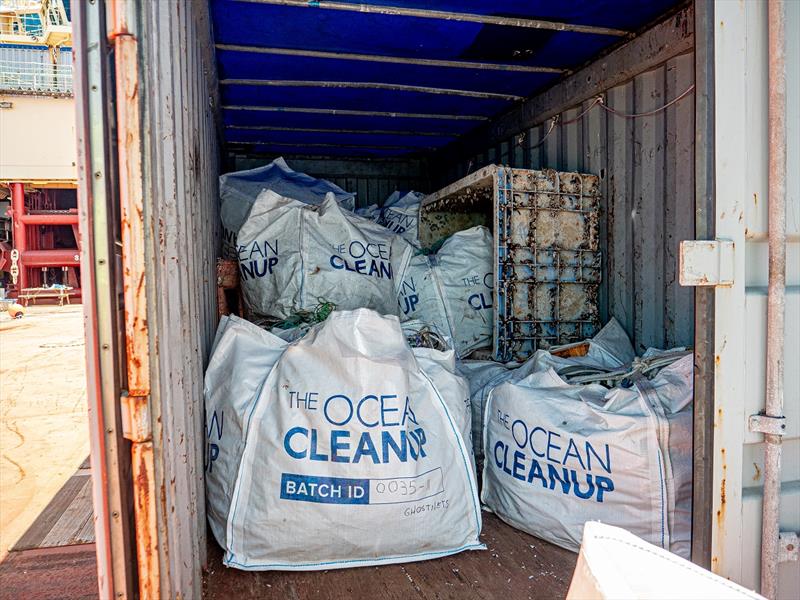
1000 rivers emit nearly 80% of global ocean plastic pollution, newly published research shows
by The Ocean Cleanup 2 May 2021 17:25 BST

Container with big bags of plastic on the vessel in the Great Pacific Garbage Patch © The Ocean Cleanup
The Ocean Cleanup, the non-profit developing advanced technologies to rid the world's oceans of plastic, today presented the results of its updated global river pollution model in the peer-reviewed journal Science Advances.
The publication sheds new light on where and how much plastic flows into the oceans via rivers. With the help of new measurements and modeling, the study shows that 1000 rivers shed almost 80% of plastic emissions. This number is 100 times more than the 10 rivers that were previously thought to be responsible for most of the pollution. The study was conducted in collaboration with researchers from Wageningen University, Delft University of Technology, Utrecht University, and the Helmholtz Centre for Environmental Research.
Rivers are the primary sources of plastic in the oceans. These new findings indicate that ocean plastic pollution is caused by a greater number of small and medium-sized rivers, defined by a set of geographic factors that determine the highest contribution to the inflow of plastic into our oceans. This understanding is contrary to previous estimations that a small number of massive rivers are the major contributors. Globally, 1000 rivers emit nearly 80% of pollution. One the one hand, this represents 1% of all rivers globally, yet, on the other hand, this estimation is about 100 times as many rivers as was thought to represent the majority of emissions, based on previous studies published in 2017.
Boyan Slat, Founder and CEO of The Ocean Cleanup, commented: "While the plastic problem may seem daunting in scale, this updated understanding of where plastic becomes ocean plastic will allow for a much more targeted intervention. As we see huge differences in pollution levels across the globe, these results could help to rapidly increase the speed of solving the problem. We will use this new data as a guide for our cleanup activities, and we hope others will too."
The plastic waste that flows into the oceans is not only determined by the amount of plastic generated in a river basin - which is primarily driven by a combination of population concentration, economic development, and waste management quality - but also by the probability of plastic waste being mobilized and transported through the river and into the ocean. The main drivers for the likelihood of plastic waste reaching the ocean are:
- Precipitation and wind (to mobilize the waste)
- Land use and terrain slope (the 'resistance' for plastic waste to be transported)
- The distance to the nearest river and to the ocean (the longer the travel distance of plastic waste, the lower is the probability that it will reach a river or the ocean)
By considering these probabilities in detail, the research team created a global picture of where and how much plastic reaches the oceans. This map is available on the organization's website.
The study takes these extra factors into account and shows a shift in understanding which rivers emit more plastic. While previous studies ranked the world's largest rivers as the top contributors to the problem, the center of gravity has shifted to smaller rivers that flow through coastal cities in emerging economies.
For example, the study shows that tropical islands are areas with relatively high probability due to their abundant rainfall, short distances from land-based sources to rivers (of which there tend to be many on these islands), and much shorter distances to oceans than big continental rivers. These new factors lead to evident concentrations of riverine plastic pollution in many countries, including the Philippines, Indonesia, Malaysia, Dominican Republic, and throughout Central America, while large continental countries such as China and India are still high on the list as well.
Conversely, regions with a relatively low probability of becoming problem areas are land-locked countries, arid areas with little wind, or those behind thick forests. Low probability is caused by the much longer travel distances that the plastic needs to cover, with increased chances of the trash somehow being trapped under way, combined with a limited driving force through slower moving rivers. Examples of regions with low polluting numbers are Central Africa and Western China.